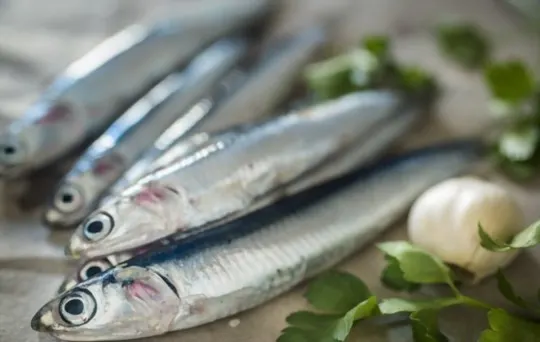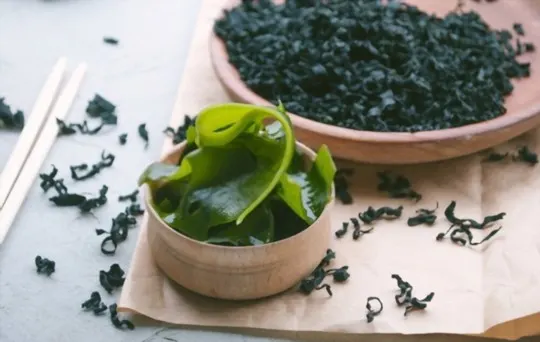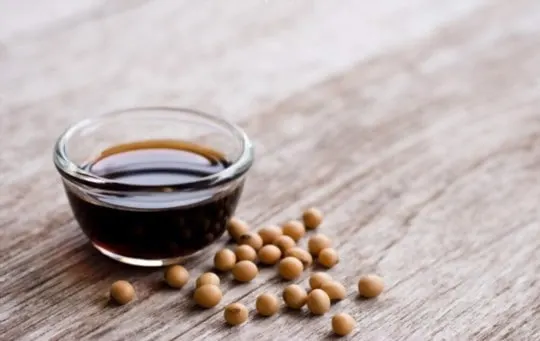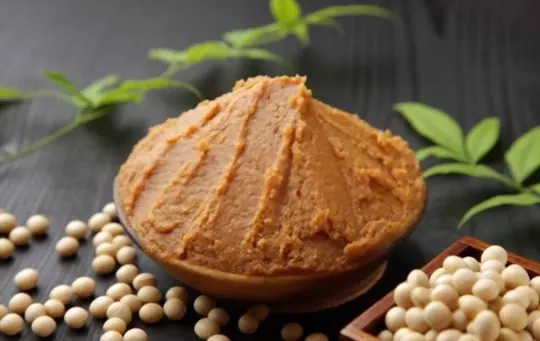Swapping out anchovy in recipes can feel like a culinary puzzle. We’ve got your back.
Anchovies pack a punch in flavor that seems tough to replicate, especially if you’re aiming for a vegan kitchen.
You’re in the right place if you’ve ever stood in front of your fridge, thinking, “Now what?”
The good news? There are plenty of plant-based alternatives that bring that umami and saltiness to your dishes without missing a beat.
From seaweed to capers, the solutions are not only simple but also pretty tasty. No more scratching your heads over how to keep your favorite dishes on the vegan track.

Why Do Vegans Need an Alternative to Anchovy?
Vegan diets exclude the consumption of any products made with or by animals, including eggs and dairy products.
This excludes many ingredients commonly used in cooking, such as anchovy paste.
However, it is easy to find vegan alternatives for these ingredients.
Anchovies have a unique taste which some people enjoy on their own, while others do not.
However, anchovy paste can add a savory taste to dishes like stews and casseroles that might otherwise lack some depth of flavor.
Many vegan alternatives are available for this; we will discuss more below.
The 5 Best Vegan Substitutes for Anchovies
Anchovies are a common ingredient in many dishes, known for their distinct umami flavor.
However, if you follow a vegan lifestyle or simply prefer plant-based alternatives, there are several substitutes that can provide similar characteristics.
In this guide, we will explore the top 5 vegan substitutes for anchovy, comparing their key characteristics and providing suggestions on proper ratios to ensure delicious results in your recipes.
| Substitute | Key Characteristics | Proper Ratio |
|---|---|---|
| Seaweed | Briny with a hint of ocean flavor | Use an equal amount of seaweed as a substitute |
| Soy Sauce | Rich umami taste with salty notes | Use sparingly due to high salt content |
| Capers | Tangy and briny with a subtle umami flavor | Use an equal amount of capers as a substitute |
| Umeboshi Paste | Tart and salty with a touch of umami | Use sparingly due to intense flavor |
| Miso Paste | Funky umami flavor with depth | Use an equal amount of miso paste as a substitute |
Now let’s dive into each substitute in more detail:
1 – Seaweed

Seaweed is a great alternative to vegan anchovy.
First and foremost, seaweeds include a variety of different vegetables that grow in the sea.
It may be surprising to find out these types of leafy greens both taste and look like the ocean.
When fresh, seaweed has a strong and salty flavor.
When dried, seaweed is crunchy and adds a subtle thick texture to your dishes.
The key to using seaweeds is to find the right variety of seaweed that best suits your taste buds.
For example, dulse may be milder, and kelp has a stronger fishy flavor.
In short, seaweeds include vegetables such as bladderwrack (a type of kelp) which you can use in place of vegan anchovy.
- Key Characteristics: Seaweed, such as nori or dulse, offers a briny taste reminiscent of the ocean. While it may not replicate the exact flavor of anchovies, it can provide a similar umami element to your dishes.
- Proper Ratio: Use an equal amount of seaweed as a substitute for anchovy. Adjust the quantity based on your taste preferences and recipe requirements.
2 – Soy Sauce

Soy sauce is a great substitute for anchovy.
First and foremost, you can use it to add flavor to your marinades, stews, dressings, and soups.
Many traditional dishes from Asia use this type of sauce as a base layer of flavor.
In short, soy sauce is made from fermented boiled soya beans and roasted grains.
This sauce is rich in the amino acid, glutamic acid.
This substance gives soy sauce its umami flavor that replicates anchovy saltiness.
When shopping for soy sauce, try to avoid brands with high amounts of sodium.
As a result, you may want to opt for low-sodium or even soy sauce made from coconut rather than soybeans.
This bean variety is often used in gluten-free cooking.
- Key Characteristics: Soy sauce is well-known for its rich umami flavor with salty notes. Although it does not mimic the fishiness of anchovies, it can add depth and complexity to your recipes.
- Proper Ratio: Use soy sauce sparingly as a substitute for anchovy due to its high salt content. Adjust the quantity based on your taste preferences and recipe requirements.
3 – Capers

Capers are the flower buds of a small, thorny Mediterranean plant.
They are typically brined in vinegar or salt before being packaged and sold.
The flavor profile of capers is similar to that of anchovies in saltiness and fishy notes.
However, there is a sweeter and bitter taste in the aftertaste.
You can use capers as a garnish or as an ingredient in sauces, marinades, and salad dressings.
In addition, these pungent green specks add flavor to pasta dishes, soups, and even casseroles.
Try to buy the whole form rather than caper flakes or caper puree when cooking with capers.
This is because you can keep these ingredients in the refrigerator for about six months.
As a result, it’s best to buy whole capers and crush them with your hands before adding them to salads, dressings, and other dishes.
- Key Characteristics: Capers offer a tangy and briny taste with a subtle umami flavor. While they don’t taste exactly like anchovies, they can provide a similar savory element to your dishes.
- Proper Ratio: Use an equal amount of capers as a substitute for anchovy. Adjust the quantity based on your taste preferences and recipe requirements.
4 – Umeboshi Paste

Umeboshi paste is made from pickled plums.
There are sweet and salty versions available in the market.
This paste is quite popular in Asian cuisine.
It’s often used as a flavor enhancer and added to rice and noodle dishes.
Umeboshi paste has a tart and savory taste similar to the umami flavor of anchovies.
This paste is particularly salty and slightly sweet, with hints of tangy fruitiness.
However, the paste is tart and slightly acidic due to its ingredients.
As a result, you may want to use it sparingly.
- Key Characteristics: Umeboshi paste is made from pickled Japanese plums and has a tart and salty flavor with a touch of umami. It provides a unique alternative to anchovies, adding a distinct tang to your dishes.
- Proper Ratio: Use umeboshi paste sparingly as a substitute for anchovy due to its intense flavor. Adjust the quantity based on your taste preferences and recipe requirements.
5 – Miso Paste

Look no further than miso paste if you’re looking for a vegan substitute for anchovy.
In general, the Japanese eat this paste as a condiment.
In addition, it’s often used as an ingredient in many dishes, from soups to salad dressings.
In short, miso is made from fermenting soybeans and rice or barley.
As a result, this paste is quite thick and earthy with bittersweet notes.
Compared to anchovy, miso has a strong fermented flavor that is intense in aroma.
This makes it an excellent substitute for adding depth of flavor to vegan dishes without using animal products.
However, many people find the taste of miso too strong when they first try it.
If you’re in this camp, consider using just a little bit of miso to start with and then adding more to taste.
- Key Characteristics: Miso paste offers a funky umami flavor with depth. While it doesn’t replicate the taste of anchovies, it can provide a rich savory element to your recipes.
- Proper Ratio: Use an equal amount of miso paste as a substitute for anchovy. Adjust the quantity based on your taste preferences and recipe requirements.

Leave a comment